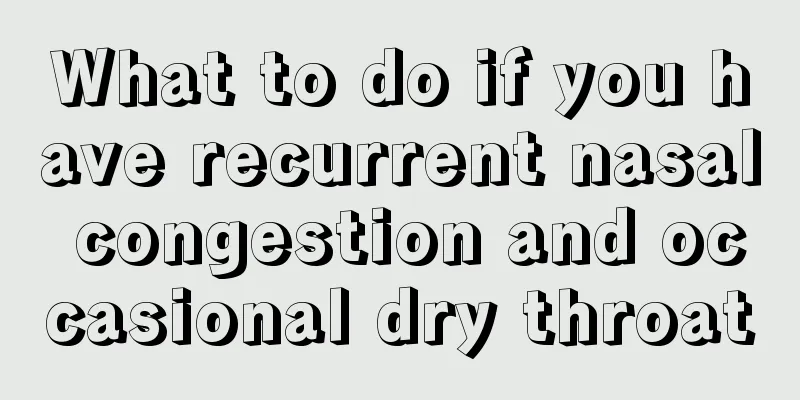What are the symptoms of childhood pigmentation polyposis syndrome?

|
Since children's immunity is constantly strengthened during their growth, many children have weak resistance before they are fully developed. This will cause many problems for children. For example, children will suffer from childhood pigmentation polyposis syndrome during their growth. Many parents are very unfamiliar with this disease, which may delay treatment time and is very unhelpful for children. Let's learn about it below. Both sexes may be affected, with onset at birth or in childhood, usually before age 10 years. Most patients experience significant weight loss, followed by gastrointestinal symptoms, and almost always have nail changes, hair loss, pigmentation, etc. 1. Pigmentation is mostly seen on the lips and their surrounding areas, cheeks, face, fingers, and occasionally on the intestinal mucosa, but there are also cases where pigmentation is limited to the trunk and limbs. The pigment can be black, brown, gray, blue, etc. A very small number of patients have only intestinal polyps without pigmentation. There is no obvious cause. There are 0.2 to 7 mm round or oval brown or black spots around the mouth, lips (especially the lower lip), and oral mucosa, which gradually increase in number. Those in the oral mucosa are larger, have clear boundaries, and no subjective symptoms. Pigmented spots may also occur on the fingers, palms, and toes, and less frequently on the nostrils, around the eyes, hard palate, and tongue. The number, size, and distribution of pigmented spots have nothing to do with gastrointestinal lesions. 2. Gastrointestinal manifestations Intestinal polyps mainly appear between the ages of 10 and 30. They can occur in any part of the gastrointestinal tract, but are more common in the small intestine and occur intermittently. There are recurrent abdominal pain, intestinal rumbling, vomiting, hematemesis, bloody stools, diarrhea, large stool volume, and stool containing fat or visible blood, as well as intussusception, intestinal obstruction and protein-losing enteropathy. If polyps become malignant, it may lead to death. 3. The cancerous nature of intestinal polyps is hamartoma. Recent studies have found that the cancerous rate of intestinal polyps in patients is 2%. Through the above explanation, you must now know the symptoms of pediatric pigmentation polyposis syndrome. When your child shows discomfort in the future, you can adjust the child's condition in time, so that you can make your child grow up more healthily, and it will not delay your child's treatment time, which is very beneficial for your child. |
<<: What is the cause of dermatitis in children?
>>: What are the symptoms of hernia in children?
Recommend
What should I do if my child has a cough and can’t cough up phlegm?
When a child has phlegm and cannot cough it out b...
Reasons for darkening of newborn skin
Generally speaking, it is normal for a newborn to...
What is the cause of capillary dilation in children?
Children are the hope of a family and the future ...
What should I do if my four-year-old child stutters?
Generally speaking, children start to learn to sp...
What should we pay attention to during children’s teeth replacement period?
Children always have a period of tooth replacemen...
Is it normal for a two month old baby to have teeth?
Is it normal for a two-month-old baby to have tee...
What should I do if my baby has eyelid edema?
What causes children’s swollen eyes? In fact, swo...
Student Mental Health
As a special group, students often face various p...
What should I do if my newborn baby doesn’t poop for two days?
Are there any mothers who have had the experience...
What is the normal blood sugar level for newborns?
The normal blood sugar value for adults is differ...
Seven points to correct children's bad habits of picky eating
In daily life, many children have anorexia and pi...
Why does my 3-year-old baby cough in the middle of the night?
When it comes to cough, many people are familiar ...
What are some ways to grow taller at the age of 12?
People with short stature always look like childr...
There are white bumps on the baby's glans
Some parents found white bumps on their baby'...
Can children eat durian when they have a fever?
Everyone will encounter various diseases during t...









